Potřebujeme váš souhlas k využití jednotlivých dat, aby se vám mimo jiné mohly ukazovat informace týkající se vašich zájmů. Souhlas udělíte kliknutím na tlačítko „OK“.
ASTM E2431-12
Standard Practice for Determining the Resistance of Single Glazed Annealed Architectural Flat Glass to Thermal Loadings
Automaticky přeložený název:
Standardní praktiky pro stanovení odolnosti s jednoduchým zasklením žíhané Architectural plochého skla na tepelném zatížení
NORMA vydána dne 1.4.2012
Informace o normě:
Označení normy: ASTM E2431-12
Poznámka: NEPLATNÁ
Datum vydání normy: 1.4.2012
Kód zboží: NS-45294
Počet stran: 10
Přibližná hmotnost: 30 g (0.07 liber)
Země: Americká technická norma
Kategorie: Technické normy ASTM
Kategorie - podobné normy:
Anotace textu normy ASTM E2431-12 :
Keywords:
annealed glass, flat glass, glass, thermal breakage, thermal load, thermal stress, soda-lime silica glass, ICS Number Code 81.040.20 (Glass in building)
Doplňující informace
| Significance and Use | ||||||||
|
Use of this practice assumes: the glass edges shall be free from damage, the glass shall be properly glazed, the glass shall not have been subjected to abuse, and the glass edge support allows in-plane movement of the glass due to thermal expansion and contraction. This practice does not address all factors that cause thermally induced stresses in annealed glass. Factors that are not addressed include: transient thermal stresses, HVAC registers, thermally insulating window coverings, drop ceilings and other heat traps, increased solar irradiance caused by exterior reflections, variations in heat transfer coefficients other than those assumed for the steady state analysis described herein, and stresses induced by thermal sources other than the sun. Factors other than those listed above may also induce thermal stress. Many other factors shall be considered in glass selection. These factors include, but are not limited to, mechanically induced stresses, wind effects, windborne debris impacts, excessive deflections, seismic effects, heat flow, noise abatement, potential post-breakage consequences, and so forth. In addition, considerations set forth in building codes along with criteria presented in safety glazing standards and site specific concerns may control the ultimate glass type and thickness selection. The proper use of this practice is intended to reduce the risk of thermally induced breakage of annealed window glass in buildings. |
||||||||
| 1. Scope | ||||||||
|
1.1 This practice covers a procedure to determine the resistance of annealed architectural flat glass to thermally induced stresses caused by exposure to sun and shadows for a specified probability of breakage (Pb). Proper use of this procedure is intended to reduce the possibility of thermal breakage of annealed glass in buildings. 1.2 This practice applies to vertical or sloped glazing in buildings. 1.3 This practice applies to monolithic and laminated glass of rectangular shape and assumes that all glass edges are simply supported. 1.4 This practice applies only to annealed flat soda-lime silica glass with clean cut, seamed, flat ground, or ground and polished edges that are free from damage. The glass may be clear or tinted as well as coated (not including coatings that reduce emissivity of the glass). 1.5 This practice does not apply to any form of wired, patterned, etched, sandblasted, drilled, notched, or grooved glass or glass with surface and edge treatments, other than those described in 1.4, that alter the glass strength. 1.6 This practice does not address uniform loads such as wind and snow loads, safety requirements, fire, or impact resistance. 1.7 The values stated in SI units are to be regarded as standard. The values given in parentheses are mathematical conversions to inch-pound units that are provided for information only and are not considered standard. For conversion of quantities in various systems of measurements to SI units refer to IEEE/ASTM SI-10. 1.8 This standard does not purport to address all of the safety concerns, if any, associated with its use. It is the responsibility of the user of this standard to establish appropriate safety and health practices and determine the applicability of regulatory limitations prior to use. |
||||||||
| 2. Referenced Documents | ||||||||
|
Podobné normy:
Historická
1.12.2012
Historická
1.10.2010
Historická
1.3.2010
Historická
1.10.2011
Historická
1.3.2012
Historická
1.6.2012
Doporučujeme:
Aktualizace zákonů
Chcete mít jistotu o platnosti užívaných předpisů?
Nabízíme Vám řešení, abyste mohli používat stále platné (aktuální) legislativní předpisy.
Chcete vědět více informací? Podívejte se na tuto stránku.


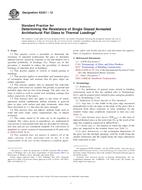
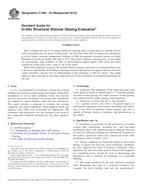 ASTM C1394-03(2012)..
ASTM C1394-03(2012).. ASTM C1422/C1422M-10..
ASTM C1422/C1422M-10..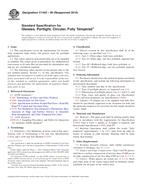 ASTM C1443-99(2010)..
ASTM C1443-99(2010)..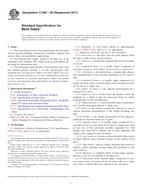 ASTM C1464-06(2011)..
ASTM C1464-06(2011)..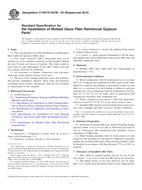 ASTM C1467/C1467M-00..
ASTM C1467/C1467M-00..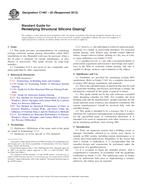 ASTM C1487-02(2012)..
ASTM C1487-02(2012)..
 Cookies
Cookies
